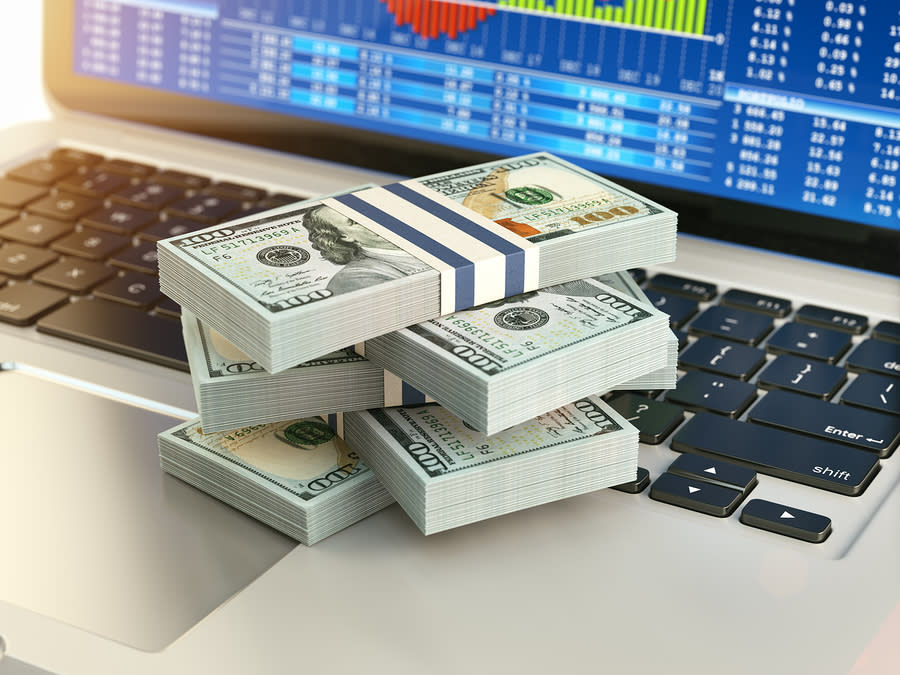3 Top Dividend Stocks to Maximize Your Retirement Income

Here's a revealing data point: older Americans are scared more of outliving wealth than of death itself.
Also, retirees who have constructed a nest egg have valid justifications to be concerned, since the traditional ways to plan for retirement may mean income can no longer cover expenses. Some retirees are now tapping their principal to make a decent living, pressed for time between decreasing investment balances and longer life expectancies.
Retirement investing approaches of the past don't work today.
For many years, bonds or other fixed-income assets could produce the yield needed to provide solid income for retirement needs. However, these yields have dwindled over time: 10-year Treasury bond rates in the late 1990s were around 6.50%, but today, that rate is a thing of the past, with a slim likelihood of rates making a comeback in the foreseeable future.
That means if you had $1 million in 10-year Treasuries, the difference in yield between 1999 and today is more than $1 million.
And lower bond yields aren't the only potential problem seniors are facing. Today's retirees aren't feeling as secure as they once did about Social Security, either. Benefit checks will still be coming for the foreseeable future, but based on current estimates, Social Security funds will run out of money in 2035.
Unfortunately, it looks like the two traditional sources of retirement income - bonds and Social Security - may not be able to adequately meet the needs of present and future retirees. But what if there was another option that could provide a steady, reliable source of income in retirement?
Invest in Dividend Stocks
As a replacement for low yielding Treasury bonds (and other bond options), we believe dividend-paying stocks from high quality companies offer low risk and stable, predictable income investors in retirement seek.
Look for stocks that have paid steady, increasing dividends for years (or decades), and have not cut their dividends even during recessions.
One approach to recognizing appropriate stocks is to look for companies with an average dividend yield of 3% and positive average annual dividend growth. Numerous stocks hike dividends over time, counterbalancing inflation risks.
Here are three dividend-paying stocks retirees should consider for their nest egg portfolio.
Alexandria Real Estate Equities (ARE) is currently shelling out a dividend of $1.18 per share, with a dividend yield of 3.3%. This compares to the REIT and Equity Trust - Other industry's yield of 4.34% and the S&P 500's yield of 1.83%. The company's annualized dividend growth in the past year was 5.36%. Check Alexandria Real Estate Equities (ARE) dividend history here>>>
Brixmor Property (BRX) is paying out a dividend of $0.24 per share at the moment, with a dividend yield of 5.02% compared to the REIT and Equity Trust - Retail industry's yield of 4.76% and the S&P 500's yield. The annualized dividend growth of the company was 11.63% over the past year. Check Brixmor Property (BRX) dividend history here>>>
Currently paying a dividend of $0.74 per share, Bancolombia (CIB) has a dividend yield of 9.7%. This is compared to the Banks - Foreign industry's yield of 3.75% and the S&P 500's current yield. Annualized dividend growth for the company in the past year was 961.04%. Check Bancolombia (CIB) dividend history here>>>
But aren't stocks generally more risky than bonds?
The fact is that stocks, as an asset class, carry more risk than bonds. To counterbalance this, invest in superior quality dividend stocks that not only can grow over time but more significantly, can also decrease your overall portfolio volatility with respect to the broader stock market.
A silver lining to owning dividend stocks for your retirement portfolio is that many companies, especially blue chip stocks, increase their dividends over time, helping offset the effects of inflation on your potential retirement income.
Thinking about dividend-focused mutual funds or ETFs? Watch out for fees.
If you're thinking, "I want to invest in a dividend-focused ETF or mutual fund," make sure to do your homework. It's important to know that some mutual funds and specialized ETFs charge high fees, which may diminish your dividend gains or income and thwart the overall objective of this investment strategy. If you do want to invest in fund, research well to identify the best-quality dividend funds with the least charges.
Bottom Line
Whether you select high-quality, low-fee funds or stocks, seeking the steady income of dividend-paying equities can potentially offer you a path to a better and more stress-free retirement.
Want the latest recommendations from Zacks Investment Research? Today, you can download 7 Best Stocks for the Next 30 Days. Click to get this free report
Alexandria Real Estate Equities, Inc. (ARE) : Free Stock Analysis Report
BanColombia S.A. (CIB) : Free Stock Analysis Report
Brixmor Property Group Inc. (BRX) : Free Stock Analysis Report
To read this article on Zacks.com click here.
Zacks Investment Research

 Yahoo Finance
Yahoo Finance 